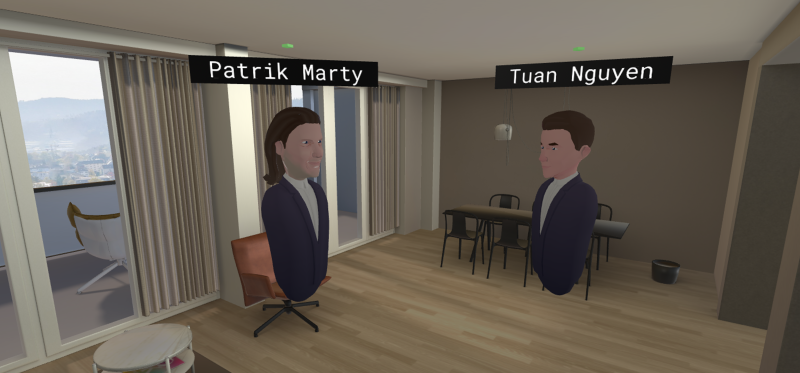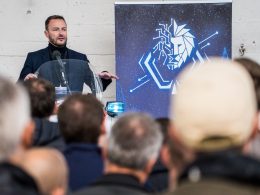Implenia is convinced by virtual reality (VR). The new technology was used in the development and marketing of the Lokstadt site in Winterthur. During each planning and construction phase, the partners involved were able to view the site in VR and interact directly using avatars.
For the development of Lokstadt, a complex 2000-watt site, Implenia used the virtual reality solution from HEGIAS and this at an early stage. And this was done at an early stage: visitors were immersed in the virtual plaster model of the site and were able to walk through it from different perspectives.
HEGIAS VR - a quantum leap
Anita Eckardt, Head of the Specialties Division at Implenia and member of the Executive Board, calls innovation her daily business. This makes her statement on the pilot project with HEGIAS VR all the more important:
"What was still missing for the breakthrough of VR was user-friendly software that users could use anywhere without installation and without any relevant programming knowledge VR technology is not new. But the road from the availability of the technology to the daily use of VR on construction projects was a long one. The startup HEGIAS has made this possible with its intuitive solution for VR applications - a real quantum leap."
The manager of the multinational Swiss construction and property service provider is convinced of HEGIAS as a company and of the HEGIAS VR product, she added:
"They are really cool. This start-up will definitely be successful because the product is great. Communication is a key issue in the construction industry in order to avoid mistakes. It saves time and money. We now have a mature platform that works well."
Visual experience for conservationists and competition jury
Ulf Hoppenstedt, overall project manager for the Lokstadt site development at Implenia, also supported the use of VR in Winterthur.
A hotel is planned for two former production halls of the former locomotive manufacturer SLM - in an initial concept study with shipping containers as rooms. Once the concept could be experienced virtually, the concerns of the conservationists were quickly allayed. The valuable building fabric was preserved and the halls were by no means "crammed full", as had previously been feared.
HEGIAS VR was also used for the architectural competition: Ulf Hoppenstedt reports that VR made the jury members' decision much easier.
"They were able to walk through the finalists' buildings digitally in order to better assess the spatial impact of these buildings and the designs."
Further advantages in marketing
The advantages of the VR solution are particularly easy to understand when marketing the properties - whether to potential investors or homeowners. In Winterthur, for example, the planned office building with various uses and the townhouses in Lokstadt were presented to potential buyers in HEGIAS VR. Prospective buyers of the townhouses were able to move virtually from floor to floor in their building using VR glasses and thus gain a spatial overview that was not available to them from the sales plans.
According to Jelena Radovic, Head of Real Estate Marketing at Implenia, this spatial understanding and the experience of the residential property are key drivers in the purchase decision. With HEGIAS VR, this can even be done on the couch at home - or in the VR showroom, which was clearly a hit in Winterthur: In the meantime, all eleven townhouses have found a new owner.
Further deployment planned
Implenia has already purchased a licence for the software and intends to expand its use. Anita Eckardt, who is also Head of Innovation at Implenia, confirms this
"We have now also realised our first building technology planning projects with HEGIAS VR and were able to identify and implement corrections and adjustments to the planning very quickly thanks to the joint inspection."
Source: Media release









